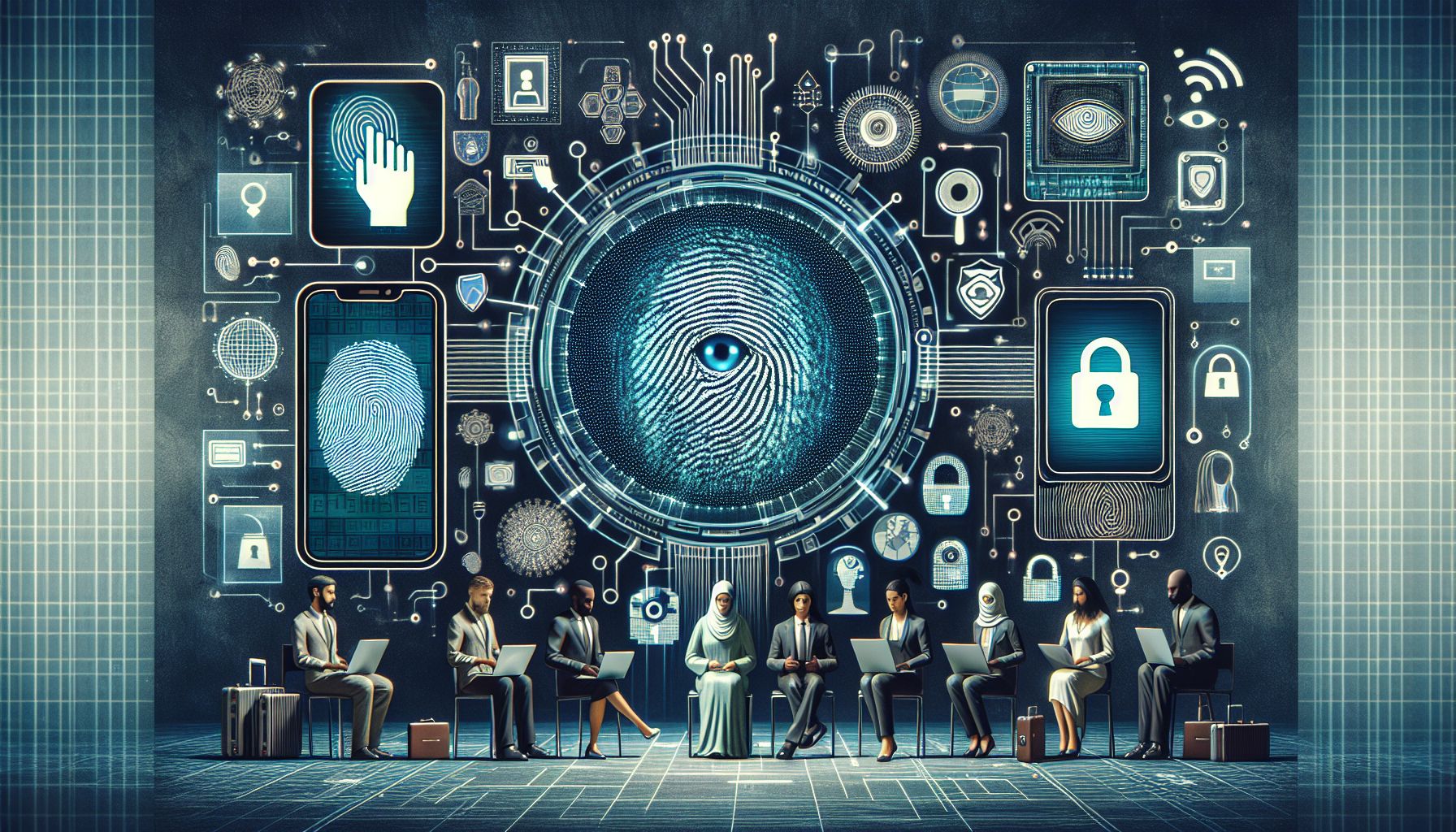📌 Let’s explore the topic in depth and see what insights we can uncover.
⚡ “Could your eyes, fingerprints, or even your heartbeat be the passcodes of the future? Welcome to the era of biometric technology, where your body could be the key to unprecedented digital security!”
Welcome to the digital age, where our world is getting increasingly interconnected and our lives more dependent on technology. Amidst the myriad of conveniences offered by this digital revolution, security stands out as a paramount concern. As hackers get smarter, the traditional methods of password protection seem like child’s play. Enter Biometric Technology, the cutting-edge innovation that’s reshaping security in the digital era. 🧩 As for Biometrics, they’re unique physical or behavioral characteristics of individuals used for digital identity verification. How is it changing the face of digital security? Let’s find out!
💡 Understanding Biometric Technology

Revolutionizing Security: Biometrics in the Digital Era
In its simplest form, biometric technology is about identifying a person based on their distinct physical or behavioral attributes. This could mean your fingerprints, iris patterns, facial features, or even the unique way you speak or walk. Unlike passwords or PINs, these traits are hard to replicate or steal, making biometrics a highly secure method of authentication. Biometric technology works in two stages: Enrollment and Authentication. During the enrollment stage, the user’s biometric trait is captured, processed into a biometric template, and stored. During the authentication stage, the user presents their biometric trait which is compared against the stored template. If there’s a match, access is granted. It’s like having a personal bodyguard who recognizes you instantly and doesn’t let any imposters through.
🔐 Biometric Technology in Action: Real-world Applications
Biometric technology is not just a concept floated around in tech conventions or limited to high-security government facilities. It’s becoming a part of our everyday lives. Let’s explore some real-world applications:
Smartphone Security
Smartphones have become an extension of our personalities, storing vast amounts of personal and financial data. Biometrics like fingerprints and facial recognition have become commonplace for unlocking phones, adding an extra layer of security.
Banking and Finance
Biometric technology is helping banks and financial institutions add a layer of security to transactions, reducing the risk of fraud. From fingerprint scans in ATMs to facial recognition in mobile banking apps, biometrics are making financial interactions safer and more convenient.
Airport Security
Airports around the world are employing biometric technology to enhance security and streamline passenger flow. Biometric e-passports, facial recognition boarding systems, and fingerprint scans for immigration checks are making travel more secure and hassle-free.
Law Enforcement
Biometric technology is a powerful tool in the hands of law enforcement agencies. It’s used for suspect identification, criminal investigations, and surveillance. The FBI’s Next Generation Identification system uses biometrics like fingerprints, iris scans, and facial recognition to identify criminals.
🚀 The Future of Biometrics: Beyond Fingerprints and Faces
Biometric technology is continuously evolving, going far beyond just fingerprints and facial recognition. Here’s a sneak peek into the future of biometrics:
Behavioral Biometrics
This involves identifying individuals based on their unique behavioral patterns, such as keystroke dynamics (the unique way a person types on a keyboard), voice recognition, and gait analysis (the unique way a person walks). It’s like your digital footprint becoming your new ID card.
Vascular Biometrics
This involves identifying individuals based on the unique patterns of their vein network. This technology is already being used in some high-security sectors and has potential for wider adoption due to its high accuracy and resistance to forgery.
Biometric Data Fusion
This involves combining multiple biometric traits to create a more robust and accurate identification system. It’s like creating a super-secure lock that requires multiple unique keys to open.
🚧 Challenges and Ethical Concerns
While biometric technology offers promising solutions for digital security, it’s not without its challenges and ethical concerns. 🧠 Think of Privacy as a major concern as biometric data is personal and sensitive. Unauthorized access or data breaches can lead to serious violations of privacy. Moreover, there’s the risk of false positives or negatives, which can lead to wrongful identification or denial of access. Ethically, the use of biometrics for surveillance and tracking raises concerns about potential misuse and invasion of privacy. There’s a fine line between security and surveillance, and it’s crucial to ensure biometric technology is used responsibly and ethically.
🧭 Conclusion
Biometric technology is undoubtedly revolutionizing the way we approach security in the digital age. It’s like replacing an old, rusty lock with a state-of-the-art security system. From smartphones to airports, it’s enhancing security and convenience in numerous sectors. As we step into the future, biometric technology promises to become even more innovative and prevalent. However, as we embrace its advantages, it’s equally important to address its challenges and ethical implications. After all, in our quest for security, we must ensure we’re not compromising on our rights and freedoms.
🚀 Curious about the future? Stick around for more discoveries ahead!
